This was published 6 years ago
Traquair House, Scotland: The house where royalty and intrigue sought refuge
By Steve Meacham
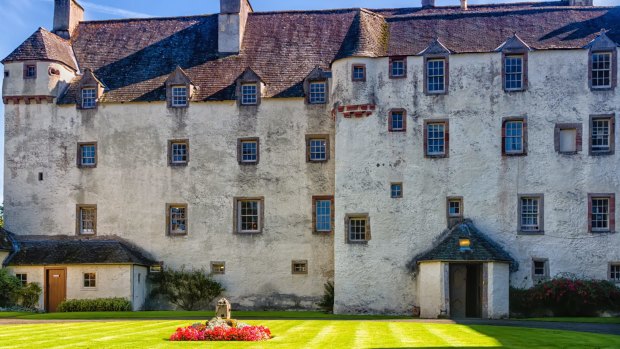
Traquair House, Scotland.Credit: Shutterstock
Catherine Maxwell Stuart – otherwise known as the 21st Lady of Traquair (pronounced Track-Air) – greets us at Scotland's oldest, continually inhabited stately home.
"My family were usually on the losing side of Scottish history, both in politics and religion," she says in the dining room surrounded by portraits of her illustrious, but unlucky, forebears. "It's a wonder we've held onto this house for so long."
Traquair was originally a hunting lodge in Ettrick Forest, built in 1107 AD for the kings and queens of Scotland.
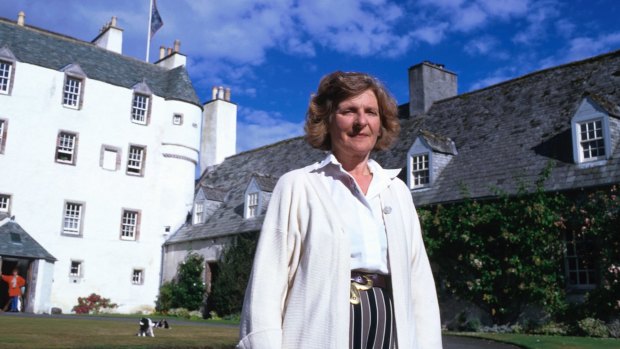
Lady Maxwell Stuart Credit: Alamy
"They came here for the fishing, the hawking and the hunting," she explains, asking us to call her Catherine. "Of course, in those days our ancestors hunted bears as well as deer. Which is why the bear features so prominently on our coat of arms."
Arguably no other non-royal home in Scotland has witnessed so many ups and (mainly) downs in the past 900 years and still remained as intact as Traquair. Which makes it a living testimony to almost a millennium of Scottish history.
Catherine is the first "Lady of Traquair". All previous 20 incumbents have been "Lairds", beginning with James Stuart, who was killed alongside his monarch, James IV, at the Battle of Flodden in 1513.
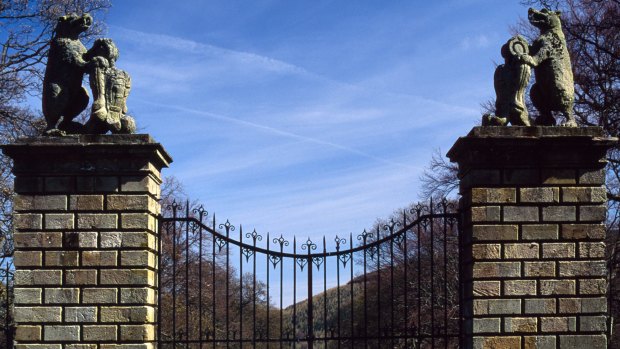
Traquair House: The gates were closed after the 1745 rebellion and will not be opened till a Stuart king is on the throne of Scotland.Credit: iStock
His grandson – John, the fourth Laird – was a confidante of Mary, Queen of Scots. As Captain of the Queen's Guard, he was Mary's personal bodyguard. Which, as Catherine notes, "makes you wonder where he was when her husband, Lord Darnley, was murdered".
Mary and Darnley came to stay at Traquair in 1566, Catherine explains, showing us the ornate four poster bed where they slept alongside the cradle of their baby – the future James I of England.
"Mary thought she was pregnant again and whispered that she would like to be excused the next day's hunting," Catherine continues. "But Darnley said, 'What! Would you spare the mare because she is in foal?' "
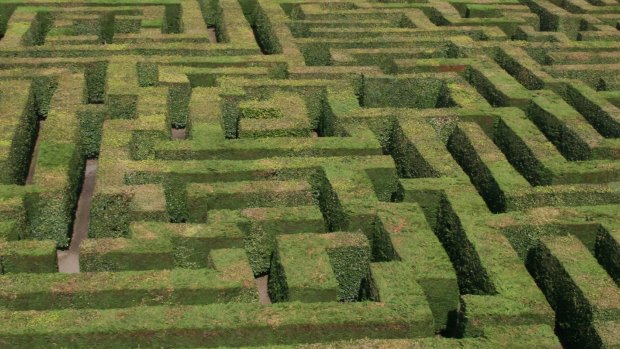
The hedge maze at Traquair House is the largest in Scotland.Credit: iStock
The fourth Laird masterminded Mary's later escape from Holyrood Palace, which explains why so many of her gifts to him – including a plaster cast of her tiny hand, made when she left Scotland for the final time – are on display at Traquair.
The seventh Laird was a keen supporter of Charles I, who granted him an earldom in 1628. New wealth enabled the Earl to add a top storey to Traquair and divert the River Tweed so it ran further away from the house.
His luck didn't last. During the Civil War, he sent his son, Lord Linton, and some troops to join the Royalist Earl of Montrose before the battle of Philiphaugh, then withdrew them on the eve of battle. Eventually both Traquair and his son were taken prisoner at the Battle of Preston and held at Warwick Castle.
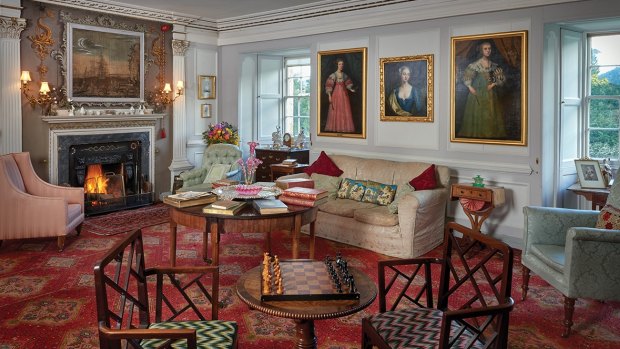
Inside Traquair House.
The fourth Earl remained faithful to the Catholic James II, forced to flee to France by his protestant daughter Mary and her husband, William of Orange. When King James died, Traquair's loyalty transferred to the Old Pretender (James' son), then the Young Pretender (James' grandson, Bonnie Prince Charlie). Naturally that led to him being imprisoned in Edinburgh Castle.
In 1715 he supported his brother-in-law, Lord Nithsdale, who was taken prisoner after the Jacobite Rising, imprisoned in the Tower of London and sentenced to death.
Catherine shows us the portrait of Lady Nithsdale who rescued her husband on the eve of his execution, smuggling him out in a woman's gown. That same gown is on display upstairs.
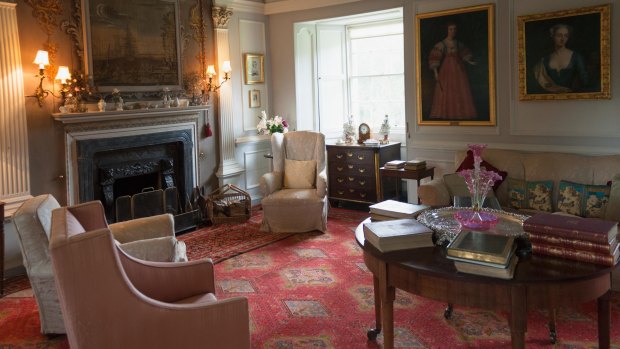
The High Drawing Room in Traquair House.Credit: Alamy
The fifth Earl famously locked the Bear Gates at the entrance of the estate in 1745 after wishing Bonnie Prince Charlie good fortune on his march south to London, vowing the gates must not be reopened until a Stuart king was restored to the throne. Then came Culloden, so the gates have remained locked ever since. Following tradition, the fifth Earl was also imprisoned – in the Tower of London.
There, in a nutshell, is a history of Scotland's romantic period and the story of this extraordinary home.
Future lairds preferred a less risky life, but they remained Catholic even when that was in itself dangerous. One of the most moving aspects of Traquair is the "secret" set of stairs used at least once to allow a Catholic priest to escape a search party.
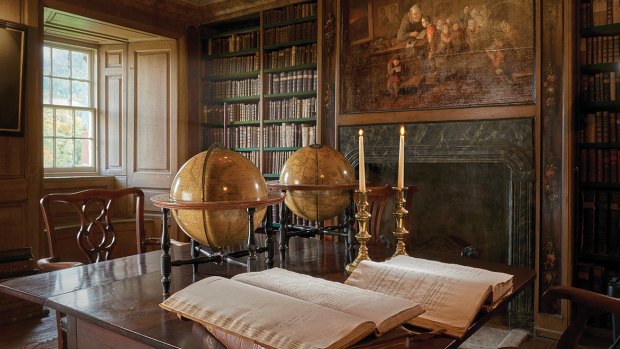
The library at Traquair House.
Still, the old sympathies continue: one of the five beers brewed at the estate's brew house is Traquair Jabobite Ale.
If the house is a living treasure, the gardens are equally adorable. There are almost 40 hectares of gardens and woods for the visitor to explore – including the largest hedged maze in Scotland.
The best part, however, is having the Lady of Traquair, "Catherine", as your guide.
TRIP NOTES
MORE
DRIVE
Traquair is 48 kilometres south of Edinburgh, near Peebles.
CRUISE
Join Captain's Choice in Edinburgh in June 2017. To learn more, call Captain's Choice on 1300 176 681 or www.captainschoice.com.au.
Steve Meacham travelled as a guest of Captain's Choice.
Sign up for the Traveller Deals newsletter
Get exclusive travel deals delivered straight to your inbox. Sign up now.